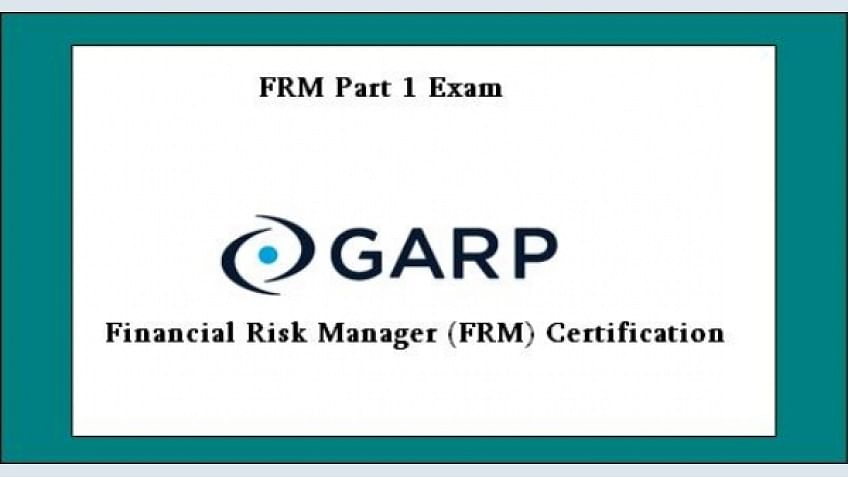In the ever-evolving world of finance, the concept of risk looms prominently. Financial risk, specifically, signifies the possibility of losing money on business or investment decisions. It comes in various forms, such as credit, liquidity, operational, foreign investment, legal, equity, and market risks. These risks are not limited to any single sector but affect businesses, markets, governments, and individuals alike. For businesses, credit risk, default risk, and operational risk are of paramount concern. Meanwhile, market risks entail volatility, changes in interest rates, and defaults. Governments, on the other hand, face risks related to losing control of monetary policy, inflation, and defaulting on bonds. Even individuals can find themselves in precarious financial situations due to poor decision-making and exposure to liquidity and speculative risks. Although understanding and assessing financial risks can enhance decision-making, their unpredictable nature and the challenges they pose make them a noteworthy challenge to overcome.
Types of Financial Risks
Financial risk refers to the likelihood of losing money on a business or investment decision. There are several types of financial risks that individuals, businesses, markets, and governments can face. Understanding these risks is crucial for making informed decisions and ensuring the financial stability of various entities.
Credit Risk
Credit risk is the risk of loss arising from a borrower’s failure to repay a loan or meet its financial obligations. This risk is most commonly associated with lending money to individuals or businesses. When granting credit, there is always a possibility that the borrower will default on their payments, resulting in a loss for the lender.
Liquidity Risk
Liquidity risk refers to the risk of not being able to convert assets into cash quickly enough to meet financial obligations. This can occur when there is a lack of buyers in the market or when an individual or business holds illiquid assets that cannot be easily sold. Liquidity risk can create significant financial challenges, as it may hinder the ability to pay debts or meet other short-term financial needs.
Operational Risk
Operational risk is the risk of loss due to internal factors within a business, such as system failures, human error, or fraud. It encompasses risks associated with a company’s processes, procedures, and systems. Operational risk can have a substantial impact on a company’s financial performance and reputation, as it can result in financial losses, legal liabilities, or damage to the brand’s image.
Foreign Investment Risk
Foreign investment risk refers to the potential losses associated with investing in a foreign country. This risk can arise from factors such as political instability, currency exchange rate fluctuations, regulatory changes, and economic instability. Investing in foreign markets can offer significant opportunities for growth and diversification, but it also exposes investors to the uncertainties and risks associated with unfamiliar environments.
Legal Risk
Legal risk refers to the potential for negative financial consequences arising from legal actions or regulatory compliance issues. This risk can result from non-compliance with laws and regulations, lawsuits, breach of contract, or changes in legislation. Legal risk can lead to significant financial losses in the form of fines, penalties, legal fees, and reputational damage.
Equity Risk
Equity risk refers to the potential for losses in the value of investments in stocks or shares. It arises from fluctuations in the stock market or the performance of individual companies. Equity risk can be influenced by a wide range of factors, including economic conditions, industry trends, company-specific events, and investor sentiment. Investors in equities must be prepared for the possibility of losses or decreased returns.
Market Risk
Market risk refers to the potential for losses due to factors that affect the overall market, such as economic changes, political events, natural disasters, or changes in investor sentiment. It is a broad risk category that encompasses various types of risks, including equity risk, interest rate risk, and currency risk. Market risk is inherent in investment activities and can impact the value of portfolios and investments.
Default Risk
Default risk refers to the risk of borrowers or issuers being unable to fulfill their financial obligations, resulting in a loss for lenders or investors. This risk is most commonly associated with bonds or loans, where the borrower may fail to make interest payments or repay the principal amount. Default risk can vary depending on the creditworthiness of the borrower or issuer, with higher-risk borrowers or issuers having a higher chance of default.
Volatility Risk
Volatility risk refers to the potential for large and rapid price fluctuations in financial markets. It is a measure of the uncertainty or variability of returns on an investment. Higher volatility implies a greater potential for both losses and gains. Volatility risk is particularly relevant for investors in options, futures, and other derivatives, as well as for traders in highly volatile markets.
Interest Rate Risk
Interest rate risk refers to the potential for losses resulting from changes in interest rates. This risk primarily affects fixed-income investments, such as bonds or loans, as interest rate changes can affect the value of these investments. When interest rates rise, the value of existing fixed-income securities typically decreases, while falling interest rates can lead to increased prices for fixed-income securities.

This image is property of www.simplilearn.com.
Financial Risks for Businesses
Financial risks are a major concern for businesses in various sectors. Failing to manage these risks effectively can have a significant impact on a company’s financial health and sustainability. Some of the key financial risks that businesses face include credit risk, default risk, and operational risk.
Credit Risk
Credit risk is of particular concern for businesses that offer credit terms to their customers. When a company extends credit, there is always a risk that customers may fail to pay their invoices on time or not pay at all. This can impact the company’s cash flow, profitability, and ability to meet its own financial obligations. To mitigate credit risk, businesses can implement strict credit approval processes, monitor customer payment behavior, and establish contingency plans for non-payment scenarios.
Default Risk
Default risk refers to the risk of a business being unable to fulfill its financial obligations, such as paying its debts or meeting contractual obligations. This can occur due to factors such as poor financial management, declining market conditions, or unexpected events. Default risk can have severe consequences, including legal actions, loss of reputation, and potential bankruptcy. To manage default risk, businesses should maintain strong financial management practices, develop contingency plans, and regularly assess their financial health.
Operational Risk
Operational risk is a significant concern for businesses, as it can lead to financial losses, disruption of operations, and damage to the company’s reputation. This risk can arise from factors such as system failures, employee errors, supply chain disruptions, or regulatory compliance issues. Businesses should implement robust internal controls, invest in risk management systems, and establish contingency plans to mitigate operational risk.

This image is property of www.simplilearn.com.
Financial Risks for the Market
Financial risks extend beyond individual businesses and can impact the broader market. These risks can have far-reaching consequences and affect the stability and performance of the financial system as a whole. Some financial risks that the market faces include volatility risk, interest rate risk, and default risk.
Volatility Risk
Volatility risk refers to the potential for large and rapid price fluctuations in financial markets. This risk can arise from factors such as economic changes, political events, or shifts in investor sentiment. Volatility can introduce uncertainty and make it challenging to predict market movements accurately. Investors and market participants should be prepared for the possibility of significant price swings and adjust their investment strategies accordingly.
Interest Rate Risk
Interest rate risk is a significant concern for the market, as changes in interest rates can impact the value of investments and the overall economy. Rising interest rates can result in decreased demand for borrowing, increased borrowing costs, and decreased investment activity. Conversely, falling interest rates can stimulate borrowing and investment but may also lead to inflationary pressures. Market participants should closely monitor interest rate movements and adjust their investment allocations accordingly.
Default Risk
Default risk is a concern for the market, as it can lead to disruptions in the flow of funds and undermine investor confidence. Default can occur when borrowers or issuers fail to meet their financial obligations, such as making interest payments or repaying loans. This risk is particularly relevant for the bond market, where investors may face losses due to bond defaults. Market participants should carefully assess the creditworthiness of borrowers or issuers and diversify their portfolios to manage default risk.

This image is property of www.simplilearn.com.
Financial Risks for Governments
Governments also face financial risks that can impact their ability to govern effectively and provide essential services to their citizens. These risks can have severe consequences and may affect the stability and well-being of an entire country. Some financial risks that governments face include monetary policy risk, inflation risk, and default risk.
Monetary Policy Risk
Monetary policy risk refers to the risk of losing control over monetary policy, which can impact the stability of the economy and the value of the country’s currency. Central banks play a crucial role in setting monetary policy, including managing interest rates and money supply. However, changes in global economic conditions, political events, or international pressures can limit a government’s ability to implement its desired monetary policy. Failure to effectively manage monetary policy risk can result in destabilization of the economy and inflationary pressures.
Inflation Risk
Inflation risk is a concern for governments, as it can erode the purchasing power of their citizens and impact economic stability. Inflation refers to a sustained increase in the general price level of goods and services over time. High inflation can lead to decreased consumer spending, reduced business investment, and increased costs of living. Governments must implement effective monetary policies and fiscal measures to manage inflation risk and maintain price stability.
Default Risk
Default risk is a significant financial risk for governments, as it can result in the inability to repay debts or meet financial obligations. Default can occur when a government fails to make timely payments on its bonds or other forms of debt. Default can have severe consequences, including reduced access to capital markets, higher borrowing costs, and damage to the country’s reputation. Governments must maintain responsible fiscal policies, manage their debt levels, and ensure transparency and accountability to mitigate default risk.

This image is property of i.ytimg.com.
Financial Risks for Individuals
Individuals also face financial risks that can impact their financial well-being and long-term goals. These risks can arise from a variety of factors and require individuals to make wise financial decisions and adopt risk management strategies. Some financial risks that individuals face include poor decision-making, liquidity risk, and speculative risk.
Poor Decision-Making
Poor decision-making can lead to significant financial losses and hinder an individual’s ability to achieve their financial goals. This risk can manifest in various ways, such as making impulsive or uninformed investment decisions, excessive borrowing, or overspending. To mitigate the risk of poor decision-making, individuals should educate themselves about personal finance, seek professional advice when needed, and develop disciplined financial habits.
Liquidity Risk
Liquidity risk refers to the risk of not being able to access cash or liquid assets when needed. This can occur when individuals face unexpected expenses, income loss, or disruptions in their financial situation. Liquidity risk can result in financial stress, missed payments, or the need to sell assets at unfavorable prices. Individuals should maintain an emergency fund, manage debt levels responsibly, and diversify their investments to manage liquidity risk effectively.
Speculative Risk
Speculative risk refers to the potential for significant gains or losses resulting from investments or financial activities that involve a high degree of uncertainty. Speculative activities may include investing in highly volatile assets, engaging in high-frequency trading, or investing in emerging markets. While speculative activities offer the potential for substantial returns, they also expose individuals to a higher risk of losses. Individuals should carefully assess their risk tolerance and consider their financial goals before engaging in speculative activities.

This image is property of www.simplilearn.com.
Understanding and Assessing Financial Risks
Understanding and assessing financial risks is essential for individuals, businesses, markets, and governments. By identifying and evaluating these risks, entities can make informed decisions, develop risk management strategies, and take appropriate actions to mitigate and manage risk. However, assessing financial risks can be challenging, as they can be unpredictable and subject to various external factors.
Importance of Risk Assessment
Risk assessment is a crucial process in understanding financial risks and their potential impact. It involves identifying and analyzing potential risks, estimating their probability and potential consequences, and prioritizing risks based on their significance. Risk assessment enables entities to focus their attention and resources on the most critical risks, develop appropriate risk management strategies, and allocate resources effectively.
Risk Management Strategies
Risk management involves the implementation of strategies and measures to mitigate, monitor, and control financial risks. Effective risk management requires a proactive approach and a comprehensive understanding of the risks faced by the entity. Strategies for managing financial risks may include diversification of investments, implementation of internal controls, insurance coverage, hedging strategies, and contingency planning. Each entity should develop customized risk management strategies based on its unique circumstances, risk appetite, and financial goals.
Challenges in Predicting and Overcoming Financial Risks
Predicting and overcoming financial risks can be challenging due to the dynamic and unpredictable nature of the financial landscape. Financial risks can emerge from various sources and can interact with one another, making it difficult to anticipate their full impact. Additionally, the global interconnectedness of financial markets and the influence of external factors, such as political events or natural disasters, can further complicate risk assessment and management.
To overcome these challenges, entities should adopt a proactive and adaptive approach to risk management. This includes regularly monitoring and reviewing risks, staying informed about industry and market trends, and continuously evaluating the effectiveness of risk management strategies. Collaboration with experts, leveraging technology and data analytics, and maintaining a culture of risk awareness and prevention can also contribute to overcoming financial risks effectively.
In conclusion, financial risks pose significant challenges and uncertainties to individuals, businesses, markets, and governments. Understanding and assessing these risks is crucial for making informed decisions, protecting financial stability, and achieving long-term goals. By adopting risk management strategies, entities can mitigate the impact of financial risks and navigate the complexities of the financial landscape with greater confidence and resilience.
